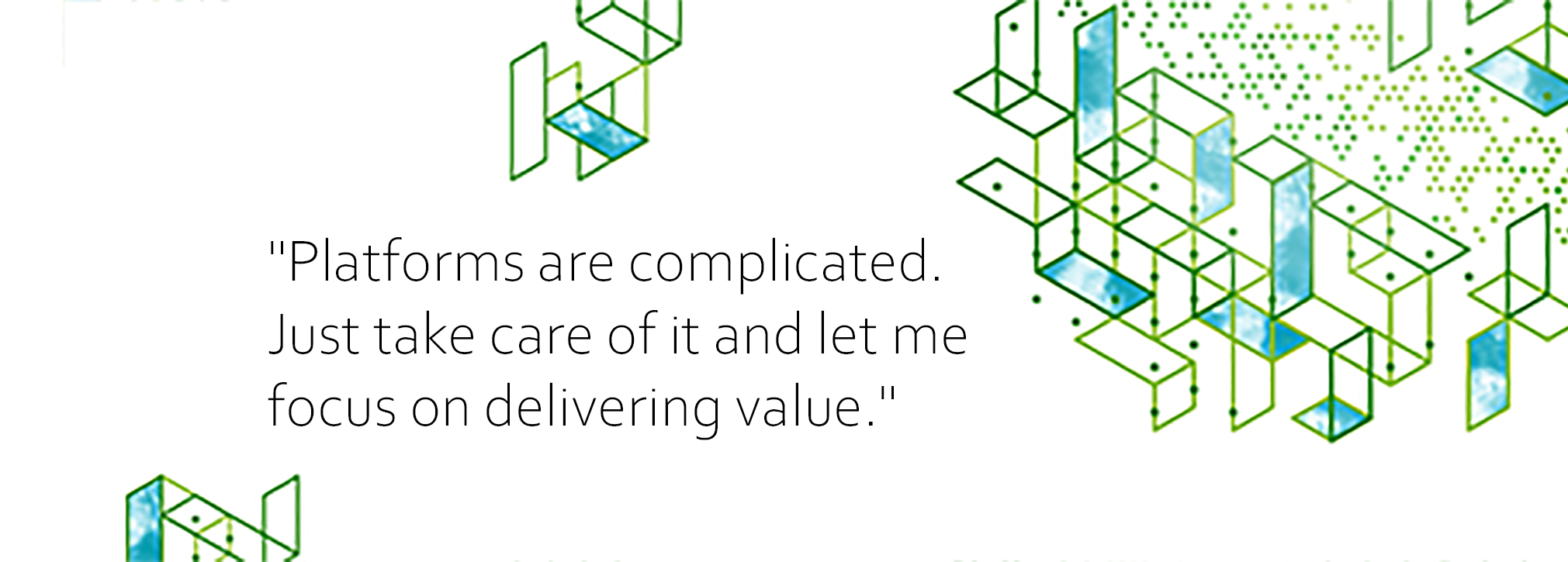
Platform Management
In our previous article (The Shift to PaaS), we talked about the “subscribe and go” model for platform consumption which is increasingly enabling mainstream adoption of cloud-native platforms. However, this model may not suit all business requirements and many organisations must deal with a combination of consumption models involving hybrid on-premise and cloud platforms or even multi-cloud platforms.
Hybrid is a common pattern across most organisations: they have legacy infrastructure that must still be maintained in their own data centres or regulatory requirements may not allow for 100% “all in” to the cloud. Hybrid requirements can most easily be supported with our second platform consumption model where our specialists can build, run, and maintain the platform 24x7 as a managed service in your own data centre.
Beyond hybrid deployments, there is an emerging demand for multi-cloud capabilities—the ability to deploy workloads to more than one cloud vendor. The 2020 IDG survey on cloud adoption shows that more than 55% of respondents were in more than one public cloud and 21% were in more than two public clouds. Multi-cloud consumption is driven by a number of benefits:
- Best-of-breed platform or service options are the most commonly cited benefit of multi-cloud. Providers may have superior offerings than their competitors in certain areas, perhaps because of maturity or by simply being the pioneer. A multi-cloud strategy takes advantage of the differentiating strengths of cloud providers, giving flexibility for organizations to leverage the best offerings from different providers.
- Cost savings or cost optimisation are the next most popular choice for multi-cloud, with survey respondents citing the ability to shop around for the best price for a particular cloud service.
- Reducing risk is another driver for multi-cloud deployments, where putting all your technology assets into one provider may be considered a commercial or concentration risk.
- And while high-availability and disaster recovery are usually supported within a single cloud provider via “availability zones” and geographical distribution, many organisations rely on cloud portability as part of their business continuity planning.
While multi-cloud portability may bring the benefits of “cherry-picking” best of breed capabilities or may reduce commercial or concentration risk, it does however come with challenges that should be considered.
- Containers have made application portability an almost trivial concern. However, an application is often useless without accompanying data and the best place to run an application is usually determined by “data gravity”. Applications may be portable but the data they rely on are less so. Organisations who wish to follow a multi-cloud approach will need to carry the additional complexity and cost of shifting perhaps peta-bytes of data to the particular clouds where those workloads will run.
- Security, privacy, governance and compliance all become significant challenges in a multi-cloud environment. Cloud administration skills are difficult enough to find, let alone finding skills for two or three clouds and integrating different ways of managing accounts, security, access control, monitoring etc.
This is why Red Hat OpenShift is a leading choice for both hybrid and multi-cloud deployments. OpenShift runs on-premise or on any cloud and Deloitte has experience running Red Hat OpenShift on the three major cloud providers.
Together, Deloitte and Red Hat bring more than five years of direct container platform experience, skills, and knowledge that can accelerate the needs of an organisation. Flexibility is gained through automated, and self-service models, that allow for a container platform with all runtimes and integration tooling to be delivered in a matter of days or weeks, not months—enabling faster time to market and greater business value. The combination of Red Hat’s market leading enterprise Kubernetes platform OpenShift and Deloitte’s platform engineering expertise have been brought together in the Platform CoE Platform Management offering to help accelerate business value for our customers. Enabling freedom of choice in architecting hybrid and multi-cloud solutions, supporting the best of breed options in terms of cost, location and features required for success.
 This article was co-written with Brian Hanvey
This article was co-written with Brian Hanvey
Brian is a Senior Principal Solutions Architect at Red Hat.
He is a Systems and Technology Professional with strong business acumen and entrepreneurial abilities, that are used to drive overall solution success for customers and product sales for Red Hat.


